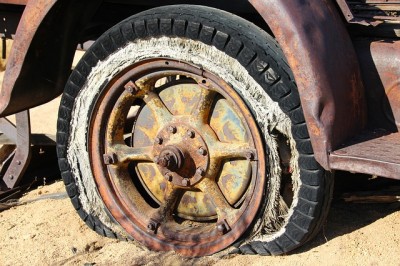 By Mary Daniel, Department of Biology, Carleton University
By Mary Daniel, Department of Biology, Carleton University
It’s a simple question, is it not? Well, no not really. There are many theories behind why organisms age. Is it something planned and carried out? Or is it something random that occurs due to damage? In this blog, I will go through four main theories that explain the internal biological mechanisms that give rise to the aging process and the reasons why all organisms age.
First, let me tell you why I am so interested in this topic. The average Canadian lives to be 85 years old (Statistics Canada) and some would say this is a long time. But to me 85 years is just not enough time to make a difference, to make a contribution to society. Some live and die and no one knows what their name is. I feel that we need more time, to learn, to read, to explore, to be curious, and to also give back.
The Genetic Theory of Aging
The genetic theory of aging states that there are programmed signals with timed functional changes that cause the cell to age, through the shortening of telomeres and declines in hormonal and immunologic function. (The medical dictionary)
After a certain period of time, our bodies send out a signal to reduce the repair process and to start the degradation process. The specific time is different for different organisms; for example a fruit fly lives for 30 days, a mouse for 3 years, a turtle for 100 years, and a Redwood tree lives for 1000 years. The signal that is given has unknown genetic origins and research has still to uncover the downstream proteins that stop the repair process and start the break down process.
 These signal genes are called genetic timers and they are specific sequences of DNA that govern each stage of the body’s development and determine the next appropriate step in the aging
These signal genes are called genetic timers and they are specific sequences of DNA that govern each stage of the body’s development and determine the next appropriate step in the aging
process. These genes keep track of the body’s progress and thus control the age at which certain events occur (the Hayflick Limit). There are other genes that are called death genes, and these genes tell the body to deteriorate and die. Another theory states that the shortening of telomeres, or the caps at the end of each strand of DNA that protect our chromosomes, allows cells to keep track of their age.
To expand this theory, a study in 1993 at the University of California found that mutations in a single gene can double the lifespan of Caenorhabitis elegans, a small worm often used in genetic studies. Since then, the genetic theory of aging has interested the masses and sparked a wave of research, especially with the growing concern of the aging human population.
The key stages of the aging process occur when mutations happen to the DNA sequence. If these mutations are not corrected, or are not corrected properly due to the slowing down of repair mechanisms, these mutations are passed down cellular generations and lead to incorrect protein formation. This buildup of non-functioning proteins is a marker of an aged cell, a cell that can’t fulfill its proper function, and thus an organ is not doing its job.
The Wear-and-Tear Theory of Aging
 Biological aging due to the wear-and-tear theory is simply the outcome of many deteriorating events (accumulation of injuries and damage) that affect the body. Factors like use, accidents, disease, radiation, toxins and other detrimental factors may adversely affect different parts of the body in a stochastic manner. Just like how cars and outdoor paint break down over time, this theory proposes that the same thing and in the same way humans age.
Biological aging due to the wear-and-tear theory is simply the outcome of many deteriorating events (accumulation of injuries and damage) that affect the body. Factors like use, accidents, disease, radiation, toxins and other detrimental factors may adversely affect different parts of the body in a stochastic manner. Just like how cars and outdoor paint break down over time, this theory proposes that the same thing and in the same way humans age.
According to this theory, aging occurs through small and random damaging events in a cell that add up over time. These damaging events may come from our own metabolism, as the basic mechanism of metabolism sometimes causes damage to molecules within our cells. Thus, over time, all ‘matter’ starts to ‘decay’ and reverts back into its less ordered and more minuscule state.
The Free Radical Theory of Aging
Atoms or molecules with an unpaired electron are known as free radicals. Some small free radicals that can be found in the body include hydroxyl radical (HO·) and nitric oxide radical (NO·). Reactive oxygen species cause the formation of free radicals because of their highly reactive nature, and these include hydrogen peroxide (H2O2) and peroxynitrite (NO3–). Reactive oxygen species and free radicals, many of which come from our own metabolism, are the main reasons behind the damage leading to aging and age related disease. Which particular free radical behind the push towards aging is not yet known, but there are clear observations supporting this theory, they include: the positive correlations between free radical production and metabolic rate, age, and cataracts. Free radicals cause this damage by removing electrons from the body’s molecules in a process called oxidation. Oxidation changes the shape of molecules, which often leads to loss of function. Free radicals cause oxidative damage to DNA, lipids, and proteins. This oxidative damage, or better known as oxidative stress, causes inflammation, excess blood blotting, cataracts, and atherosclerosis. We have antioxidants in our cells that protect from such damage (e.g. vitamin C, vitamin E, protein antioxidants), but over time, even these are depleted or damaged themselves, leading to cellular aging.
The Environmental Theory of Aging
 Aging caused by environmental stress starts in the womb and continues through life and has the most effect on health as we start to age. Effectively, health in old age is a reflection of health in earlier life, beginning at the very moment of conception. Thus, the road to healthy aging starts with healthy pregnancies, infants, children, and adults.
Aging caused by environmental stress starts in the womb and continues through life and has the most effect on health as we start to age. Effectively, health in old age is a reflection of health in earlier life, beginning at the very moment of conception. Thus, the road to healthy aging starts with healthy pregnancies, infants, children, and adults.
Due to the rapid industrial development in the late 20th century, chemicals used in agriculture threatened entire food webs and the health of ecological systems. Contamination of air, soil, and water with hazardous waste, byproducts of resource extraction, fossil fuel combustion, and synthetic chemicals continued to corrupt the environment. As well, pesticides and other industrial chemicals, some of which are persistent and bioaccumulative (concentrating in living organisms), contaminate people, wildlife, and the general environment. During the same time, public health measures had better control over infectious diseases, and thus new disease patterns related to activity, diet, work, housing, exposure to environmental contaminants, and social organization emerged.
With all of that said, let me tell you a bit about my project. I study how environmental contaminants may accelerate the aging process through the production of reactive oxygen species. Environmental contaminants may lead to some of the damaging events mentioned above, contributing to the aging process. Many environmental contaminants are free radicals themselves. Others lead to DNA damage and mutations, often binding directly to DNA itself. Still others produce reactive oxygen species, either directly themselves or indirectly through affecting our metabolism. Thus environmental contaminants may contribute to the aging process in the cell through the accumulation of damage.
The environment contaminants that I am focusing on are the polybrominated flame retardants. These chemicals are found in consumer products such as insulation, textiles, building materials, plastics, electronics, and foams, basically anything that you want to prevent from combusting. This project interested me because we come into contact with these products every day, even many times per day, and industry manufactures these chemicals without acknowledging their potential harmful effects. As I said earlier, there is just not enough time in a person’s lifespan, and if we can increase that time by eliminating such chemicals by demonstrating their impacts and finding alternatives to them, wouldn’t you be on board with that?
Based on:
http://www.healthaliciousness.com/articles/why-do-we-age.php
http://www.slideshare.net/hmirzaeee/aging-theories